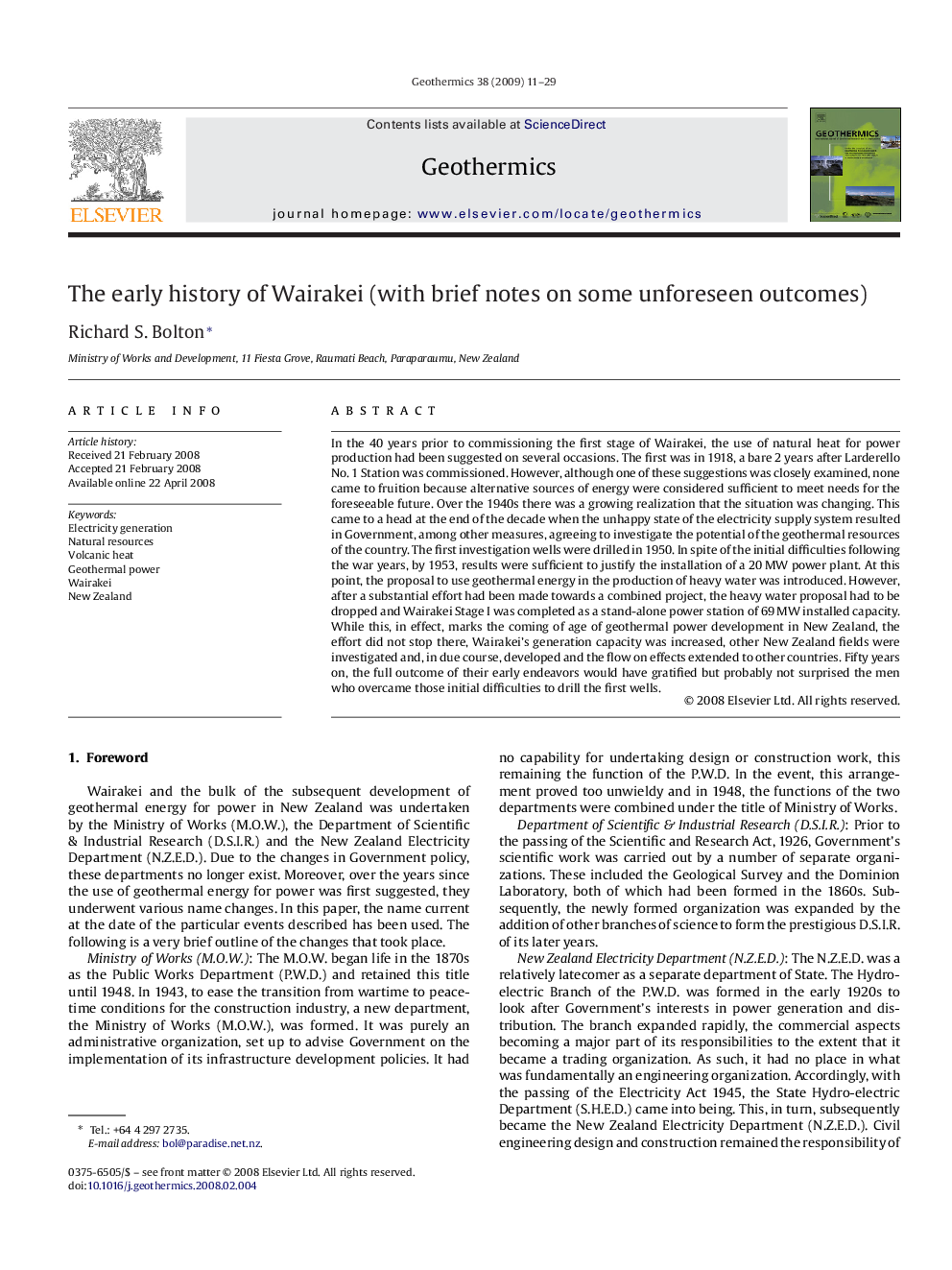| Article ID | Journal | Published Year | Pages | File Type |
|---|---|---|---|---|
| 1742560 | Geothermics | 2009 | 19 Pages |
In the 40 years prior to commissioning the first stage of Wairakei, the use of natural heat for power production had been suggested on several occasions. The first was in 1918, a bare 2 years after Larderello No. 1 Station was commissioned. However, although one of these suggestions was closely examined, none came to fruition because alternative sources of energy were considered sufficient to meet needs for the foreseeable future. Over the 1940s there was a growing realization that the situation was changing. This came to a head at the end of the decade when the unhappy state of the electricity supply system resulted in Government, among other measures, agreeing to investigate the potential of the geothermal resources of the country. The first investigation wells were drilled in 1950. In spite of the initial difficulties following the war years, by 1953, results were sufficient to justify the installation of a 20 MW power plant. At this point, the proposal to use geothermal energy in the production of heavy water was introduced. However, after a substantial effort had been made towards a combined project, the heavy water proposal had to be dropped and Wairakei Stage I was completed as a stand-alone power station of 69 MW installed capacity. While this, in effect, marks the coming of age of geothermal power development in New Zealand, the effort did not stop there, Wairakei's generation capacity was increased, other New Zealand fields were investigated and, in due course, developed and the flow on effects extended to other countries. Fifty years on, the full outcome of their early endeavors would have gratified but probably not surprised the men who overcame those initial difficulties to drill the first wells.
